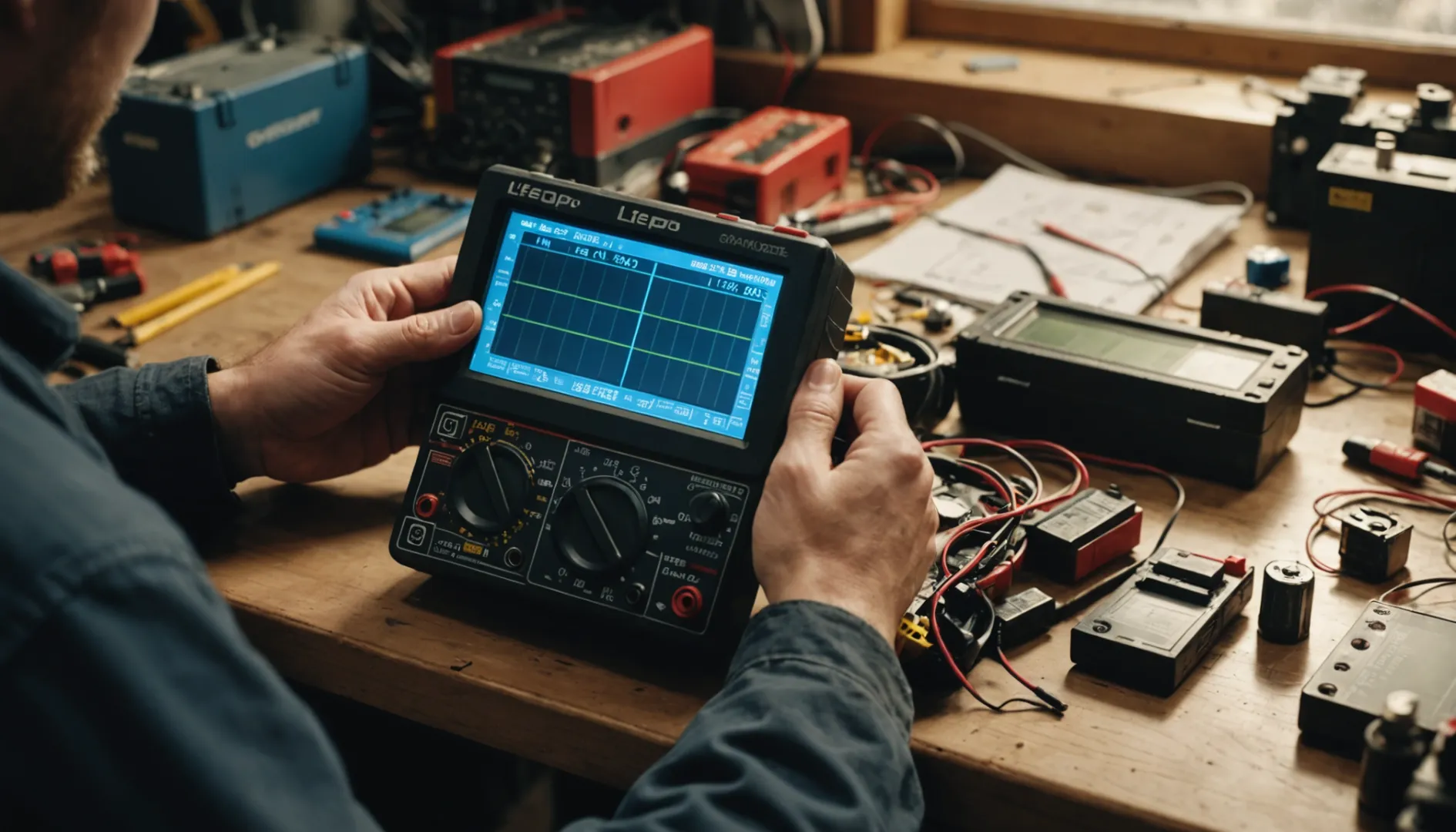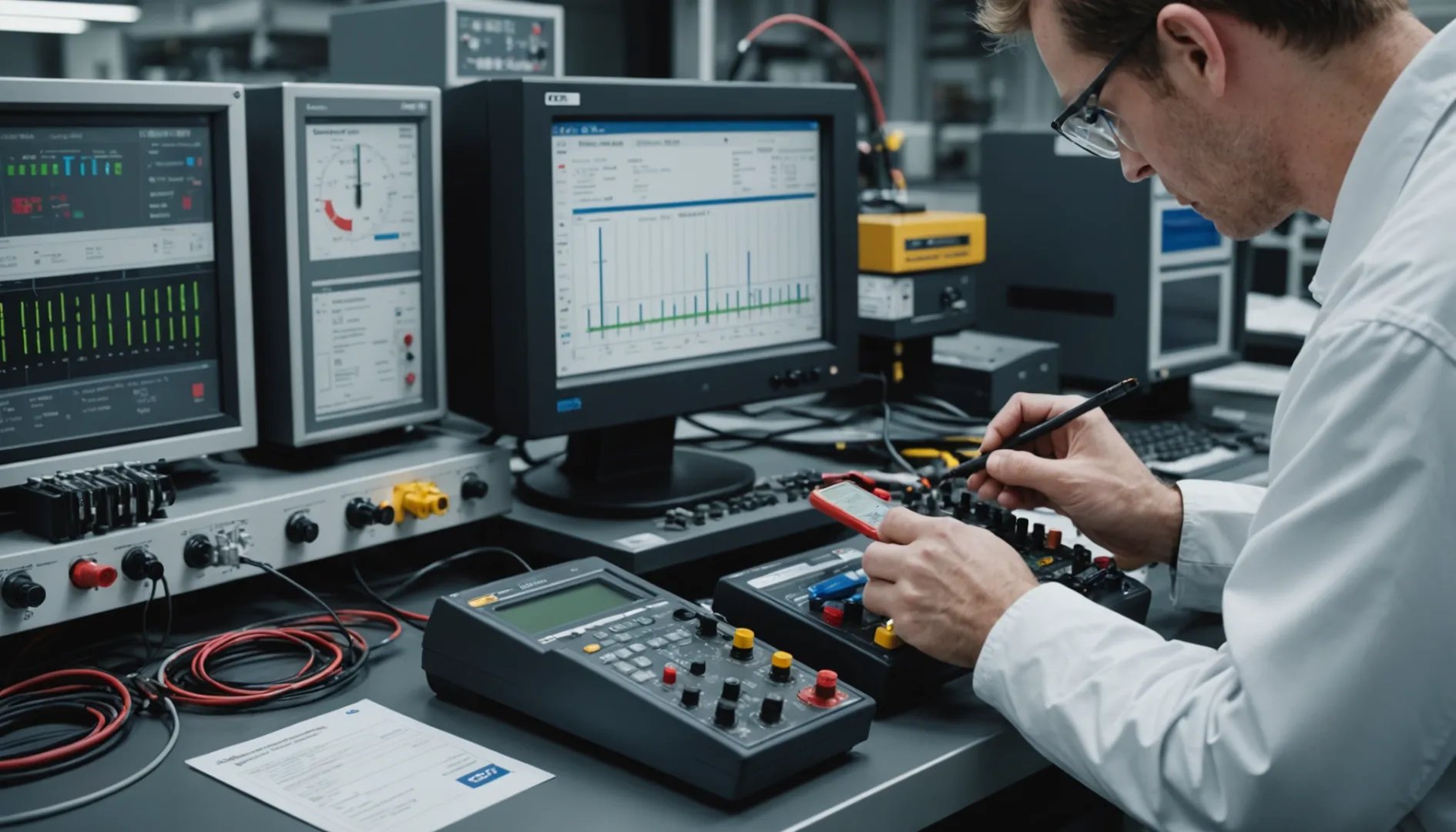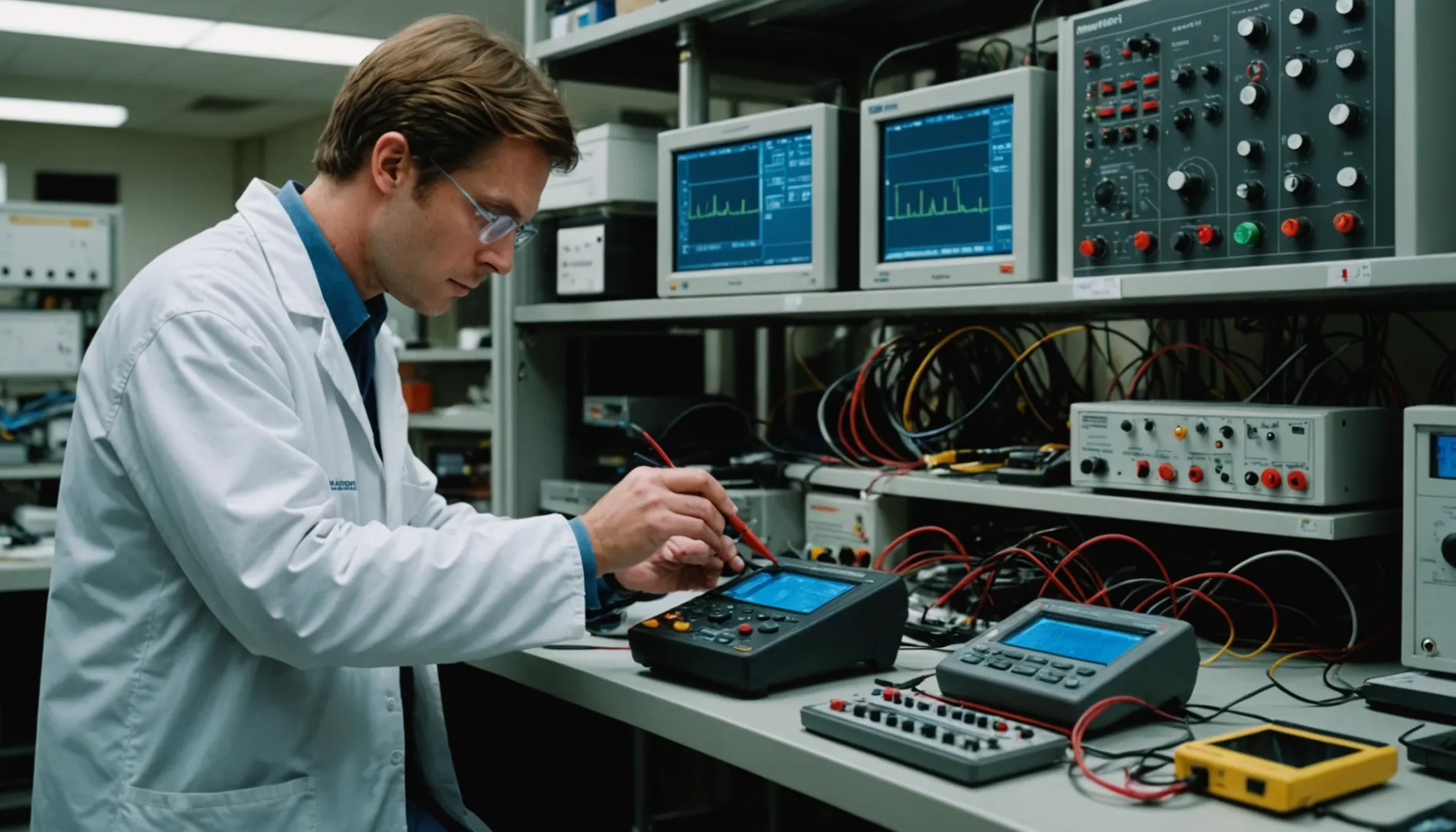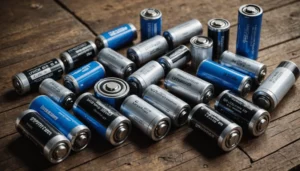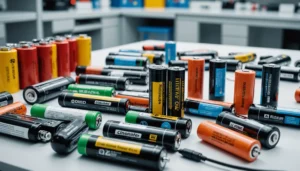Choosing the right LiFePO4 battery pack can feel overwhelming, but I've got some practical tips to share.
To find the best LiFePO4 battery pack, start by researching trusted manufacturers, ensuring they comply with industry standards like ISO certifications. Always review datasheets for vital specs, and test the battery's performance once it arrives. These actions help ensure you pick a durable, high-performing battery suited to your needs.
I remember the first time I was on the hunt for a reliable battery pack for my camper. I felt lost in a sea of technical jargon and brand names. But then I took a deep breath and broke down the process. Checking a manufacturer's reputation felt like asking around in a neighborhood to find the best restaurant — it gives you a sense of trust and reliability. Taking time to understand warranty terms or conducting a visual inspection, much like checking a used car for dents, can save you from future headaches. With these insights, you're not just buying a battery; you're investing in peace of mind for all your power needs.
LiFePO4 batteries have QR codes for authenticity.True
Most LiFePO4 batteries include QR codes to verify product details.
ISO certifications are irrelevant for battery quality.False
ISO certifications indicate adherence to quality standards, ensuring reliability.
How Do Industry Certifications Impact Battery Quality?
Ever wondered how those tiny certification logos on your battery impact its quality and reliability?
Industry certifications are crucial for battery quality because they confirm compliance with rigorous safety and performance standards. These certifications evaluate critical aspects like thermal stability, leakage resistance, and environmental impact, ensuring consumers receive reliable and safe products that meet international benchmarks.
Understanding Industry Certifications
Picture this: You're shopping for a new gadget, and your eye catches a device boasting several certification marks. It got me thinking, what do these really mean? Industry certifications are more than just fancy logos—they are formal acknowledgments that a product meets specific standards. In the battery world, these standards often focus on safety, performance, and even the planet. Certifications like UL1 and IEC are proof of rigorous testing and compliance with guidelines.
I remember the first time I had to decide on a battery for my drone. I didn’t just want any battery; I needed one that wouldn’t let me down mid-flight. That’s when I realized manufacturers seek these certifications to build trust with us, the consumers. By opting for third-party testing, they prove their products are safe and reliable, which is super important—especially for things like electric vehicles or medical devices where failure isn’t an option.
How Certifications Ensure Safety and Performance
Batteries undergo a series of tests to earn these certifications. Imagine them being put through the wringer—assessed for how they perform under various conditions, such as extreme heat or during a short-circuit. For example, the UL certification2 involves checking for risks like overheating or leaks.
These tests are vital. Think about it: we rely on batteries in our everyday gadgets. If they fail, it can be more than inconvenient—it could be dangerous. Certifications make sure that batteries perform reliably in typical use scenarios.
The Role of Environmental Certifications
Then there’s the green aspect. Apart from performance, certifications like RoHS or REACH focus on environmental friendliness. They ensure batteries don’t contain harmful substances, aligning with eco-friendly regulations. When I learned about RoHS compliance3, it hit home how manufacturers committed to sustainable practices can sway environmentally conscious buyers like me.
The Impact on Consumer Decision-Making
For consumers, certifications act as a quality seal of approval. I know I’m not alone in feeling more confident choosing a product with recognized certification marks over uncertified ones. This trust drives our buying choices.
In fact, companies know this too. They often highlight their certifications to stand out in a crowded market. When I’m hunting for battery reliability4, these marks are my go-to filter for narrowing down my options.
In essence, industry certifications are the backbone of maintaining high standards in the battery industry. They assure us that products not only meet but exceed the necessary benchmarks for safety, performance, and environmental care.
ISO certifications ensure battery quality.True
ISO certifications indicate compliance with industry standards for quality.
Genuine LiFePO4 batteries have energy density over 200Wh/kg.False
Genuine LiFePO4 batteries typically have energy density between 150-180Wh/kg.
What Should I Look for in a LiFePO4 Battery?
Choosing a LiFePO4 battery isn't just about specs—it's about finding the perfect match for your needs.
To get the best out of a LiFePO4 battery, focus on its capacity, voltage, energy density, discharge rate, and cycle life. These factors ensure your battery is both powerful and long-lasting.
Capacity and Voltage
When I first started looking into batteries, capacity and voltage seemed like the alphabet soup of specs. But I learned that capacity, measured in ampere-hours (Ah), tells me how long my device can run. It's kind of like deciding how much coffee I need to make it through the day! Voltage, on the other hand, affects power delivery—think of it as the intensity of that caffeine kick. For example, a 12V battery is a go-to for solar power systems5 because it works seamlessly with many inverters.
Energy Density
I remember lugging around heavy batteries and wishing they were lighter. That's where energy density comes into play—it measures how much energy a battery holds relative to its weight. A higher energy density means more power without feeling like I'm carrying a brick. LiFePO4 batteries usually range from 150 to 180 Wh/kg, making them perfect for electric vehicles6 that need to keep things light.
Discharge Rate
The discharge rate was a bit of a mystery until I realized it's all about speed—how quickly the battery can release its stored energy without getting damaged. It's like having a fast or slow-draining coffee cup. For gadgets needing quick power bursts, like electric bikes7, a higher C-rate is essential.
Cycle Life
Cycle life is like the lifespan of your favorite pair of shoes; the more cycles, the longer it lasts before wearing out. LiFePO4 batteries are champs here, often exceeding 2000 cycles. This makes them a solid choice for renewable energy storage8 where endurance matters.
Safety Features
Safety isn't just peace of mind—it's non-negotiable. LiFePO4 batteries are naturally stable, but I always look for extra safety features like battery management systems (BMS) to prevent overcharging and overheating. This is especially crucial for home energy systems9 where safety is paramount.
Temperature Tolerance
Living in an area with unpredictable weather taught me to value temperature tolerance. LiFePO4 batteries operate well between -20°C to 60°C, making them reliable in extreme environments10. No more worrying about my battery giving up on me when it's too hot or cold!
Choosing the right battery isn't just ticking off a list of features; it's about understanding how each specification fits into my lifestyle and needs. It's like finding a partner who matches my pace and sticks around for the long haul.
LiFePO4 batteries have energy density of 150-180 Wh/kg.True
Genuine LiFePO4 batteries typically have an energy density between 150Wh/kg and 180Wh/kg.
A datasheet is not necessary for battery purchase.False
A datasheet is crucial as it provides critical specifications like capacity and voltage.
How Can You Identify and Avoid Counterfeit Batteries?
Ever felt the sting of getting duped by counterfeit batteries? It's not just about losing a few bucks—it's about risking your gadgets and safety. Let's dive into how to outsmart these fakes.
Spotting counterfeit batteries involves checking for odd labeling, mismatched specs, and unrealistically low prices. Stick to buying from trusted sellers and always verify the manufacturer's credentials.
Understanding the Risks of Counterfeit Batteries
I remember the day my trusty old smartphone suddenly started heating up like a frying pan. It turned out the replacement battery I bought was a fake. That moment taught me the hard way about the dangers of counterfeit batteries, which can cause serious issues like device failures or even fires. It's a risk not worth taking, especially since these fake products often skip essential quality control11 checks.
Visual and Physical Inspection
The first thing I do now is to take a good, hard look at the battery. I check for misspelled words or weird logos on the label—classic signs of a counterfeit. Also, I inspect for any physical damage like cracks or dents. A quick scan of the QR code can sometimes reveal if the battery is legit or not. These visual cues12 can be the first red flags.
Verifying Specifications
Ever bought something that claimed to be "the best" but turned out to be anything but? Fake batteries often lie about their capabilities. To avoid getting duped, I always check the battery's capacity and voltage to ensure they meet my needs. I've even learned to calculate energy density—using the formula Voltage × Capacity ÷ Weight—to see if it aligns with industry standards.
Quality Assurance and Certifications
I've noticed that genuine batteries usually flaunt ISO certifications and quality assurance marks. They're not just there for show; they indicate thorough testing. If a battery doesn't have these, I'm wary of buying it. Manufacturer seals or holograms are another good sign of authenticity.
Purchase from Trusted Sources
I've found that buying from reputable retailers or directly from manufacturers is one of the best ways to avoid counterfeits. These sellers value their reputation too much to risk selling fakes. Plus, they often offer warranties, which gives me peace of mind.
Cross-Checking Customer Feedback
Before committing to a purchase, I spend some time reading customer reviews about the manufacturer's credibility. Past buyers often share valuable insights into recurring issues with certain brands. Honest customer reviews13 have become my go-to resource for checking product legitimacy.
Beware of Deals Too Good to Be True
You know how they say, "If it sounds too good to be true, it probably is"? I've been burned by too-good-to-be-true deals before, so now I'm cautious. Counterfeiters often lure buyers with tempting prices, so it's crucial to stay skeptical when faced with suspiciously low prices. These pricing anomalies14 are not worth the risk.
ISO certifications ensure battery authenticity.True
ISO certifications indicate compliance with quality standards, enhancing authenticity.
QR codes on batteries are always reliable.False
QR codes can be tampered with or faked, so they are not foolproof.
Why Is Testing Battery Performance Crucial Upon Arrival?
Imagine receiving a new battery only to find it doesn't work as promised. Testing upon arrival prevents this nightmare, ensuring safety and reliability.
Testing battery performance upon arrival is essential to confirm the battery's specifications, detect potential defects, and ensure safety. This process identifies inconsistencies or damage from transit, protecting device functionality and user safety. Proper testing prevents costly failures and extends the battery's lifespan.
Ensuring Product Specifications
I remember the excitement of opening a package containing a new battery for my gadgets. But that initial joy can quickly turn to frustration if the battery doesn’t meet the promised specifications. Testing is my shield against such disappointment. It's all about ensuring that the battery's voltage, capacity, and energy density align with what was advertised. Think of it like buying a car—would you drive off the lot without checking it first? Similarly, using tools like a multimeter to verify voltage or a capacity tester to confirm actual capacity can prevent unpleasant surprises and ensure I’m getting what I paid for.
Detecting Transit Damage
Batteries endure quite a journey from factory to doorstep, and sometimes, they're not unscathed. I learned this the hard way with a seemingly perfect battery that had an internal short circuit, invisible from the outside but disastrous in use. That’s why performance testing is my go-to step; it's like giving the battery a health check-up before it starts its job. Spotting anomalies early means I can return faulty products or request warranty service without delay.
Enhancing Safety and Reliability
Safety has always been my top priority, especially when dealing with batteries that power essential devices. I've seen firsthand how an overheating battery can be a ticking time bomb. Testing helps me ensure that my batteries are not harboring hidden dangers like overheating or leaking chemicals. For instance, running a load test lets me see how the battery performs under real-world conditions, much like a rehearsal before the big show. It gives me peace of mind knowing that my devices will operate safely and reliably.
Impact on Longevity and Cost Efficiency
Through experience, I’ve realized that a well-tested battery is not just about immediate functionality; it's also about long-term performance and cost savings. By addressing issues upfront, I avoid scenarios where a bad battery could harm my device over time. It's like regular car maintenance—spending a bit now saves me from hefty repairs later. Plus, a reliable battery means fewer interruptions and more productivity, adding to overall cost efficiency.
In conclusion, testing battery performance upon arrival might seem like an extra step, but it’s one that offers invaluable assurance for both safety and economic benefits. Exploring battery testing methods15 reveals just how crucial this process is for anyone relying on battery-powered devices.
Genuine LiFePO4 batteries have 150-180Wh/kg energy density.True
LiFePO4 batteries typically have an energy density between 150Wh/kg and 180Wh/kg.
ISO certifications guarantee battery authenticity.False
ISO certifications indicate quality standards compliance, not authenticity alone.
TOWO Power Is a leader for lihium battery solution company from China
Conclusion
Choosing a LiFePO4 battery pack involves researching manufacturers, verifying specifications, checking certifications, and testing performance upon arrival to ensure safety and reliability.
-
Discover the importance of UL certifications for battery safety. ↩
-
Learn about UL testing processes ensuring battery safety. ↩
-
Understand how RoHS compliance affects environmental impact. ↩
-
Find out why consumers prioritize reliable batteries.
TOWO Power Is a leader for solar product solution company from China ↩ -
Explore how 12V batteries integrate into solar setups. ↩
-
Learn why high energy density is crucial for EVs. ↩
-
Find optimal discharge rates for electric bike performance. ↩
-
Discover why long cycle life benefits renewable energy systems. ↩
-
Understand safety measures for home energy solutions. ↩
-
Check adaptability of batteries in harsh conditions. ↩
-
Discover the standards genuine batteries must meet. ↩
-
Learn visual indicators to spot fake batteries. ↩
-
See what other customers say about battery reliability. ↩
-
Understand why low prices can signal fakes. ↩
-
Discover diverse methods and their roles in ensuring safe battery use. ↩


